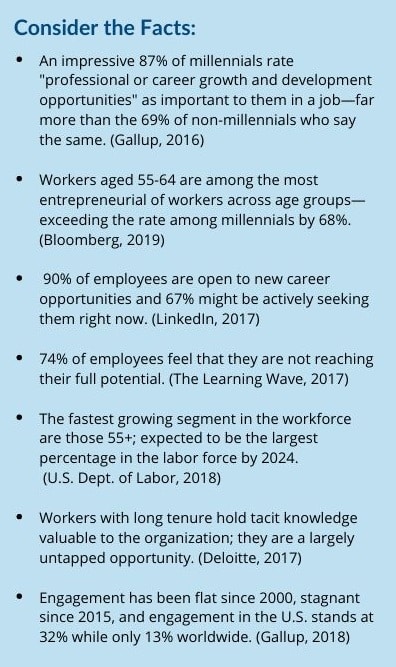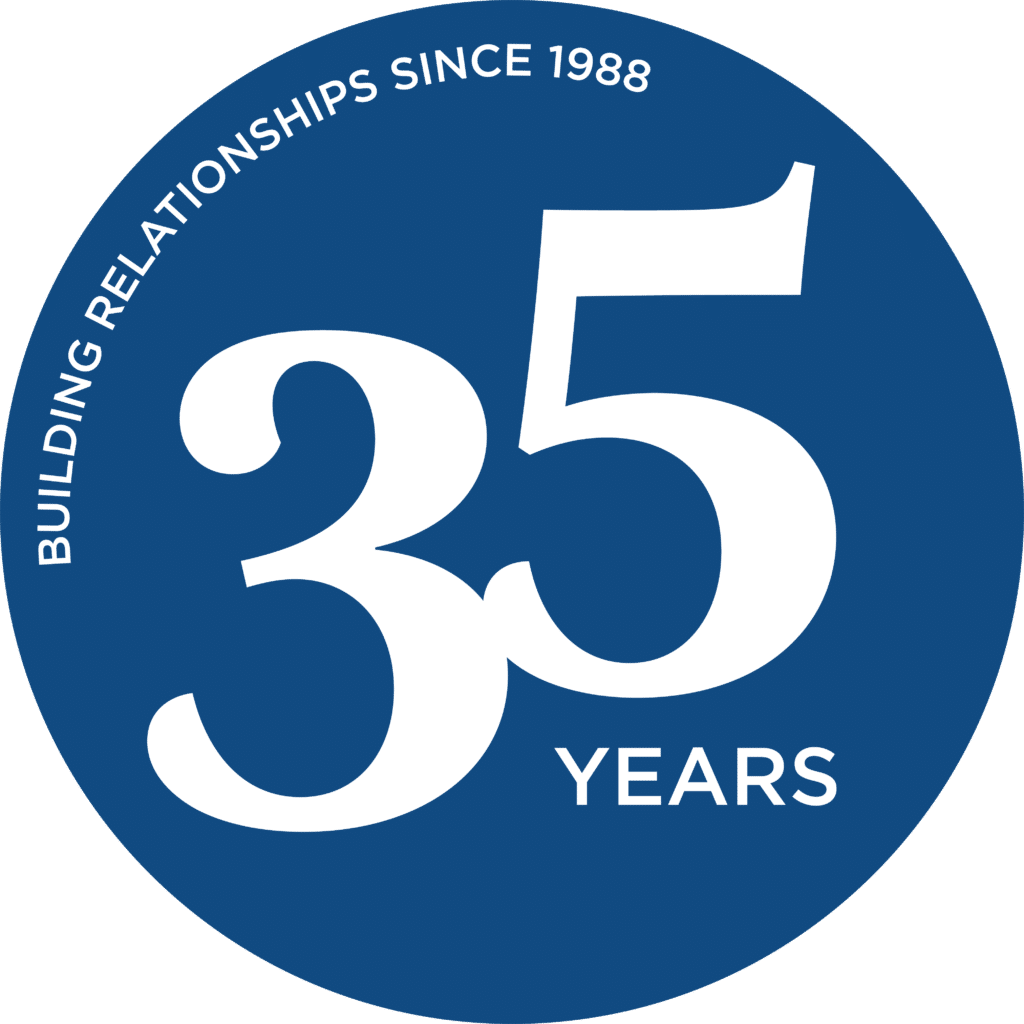Engaging Today’s Talent for Tomorrow’s Success
“It’s my life, not your engagement score; let’s re-focus.”
I recently facilitated CCI Consulting’s 2019 Fall Focus forum, bringing together an expert panel to consider the topic, Engaging Today’s Talent for Tomorrow’s Success. We were joined by area business and HR leaders to share common experiences and identify opportunities to do even more to promote employee engagement. Over the past 30+ years, since the Gallup organization popularized the employee engagement survey, countless approaches, tools and initiatives have been applied across organizations with the hopes of elevating their unique engagement and Net Promoter Scores (NPS). And, while business magazines, survey companies and ‘influencers’ have published ways to tackle the problem of worldwide declining workforce engagement, little evidence exists showing success, and there remains a limited understanding about how engagement manifests itself across organizations.
The expert panel and guests concluded what many of us—employees ourselves—already know deep down: that we seek meaningful experiences, look to add value from our efforts, and engage with others who offer us challenges and treat us with respect. That’s a sense of purpose. And, if that sense of purpose is aligned with the organization’s mission and goals, then we are more likely to engage.
Purpose and Meaning: The Foundation for Engagement
Today, purpose and meaning are making a comeback. We are coming to understand how Baby Boomers, rather than retiring fully, are seeking a 2nd or 3rd act by exploring post-retirement jobs that align with their values. Rand Organization research shows about 50% of “retirees” take on a non-traditional path or are re-entering the workforce. Gig work, or work that falls in the temporary or contracting category, is being considered as a more viable option as younger workers are losing faith in what the business stands for, and those 55+, displaced from the work they value, are moving into the Gig economy as a way of extending their careers. In fact, Pew Research identified a clear evolution among millennials, post-millennials (Gen Z) and Gen Xers whose relationship with businesses have shifted both positively or negatively, depending on the business’s commitment to society, the workforce and the environment.
National Institute of Health (NIH) research concludes that across generations, those who have identified purpose have greater life satisfaction. We can postulate that purposeful work is also correlated to employee satisfaction. Numerous studies support this and reveal that worker satisfaction is core to the intrinsic motivation needed to engage in work.
Bottom line: People are purposeful beings and company leaders who do a good job building bridges between the needs of the organization and the needs of its people have a greater chance of aligning their employee value proposition to one that also promotes employee satisfaction.

Purpose, satisfaction and intrinsic motivation came into focus for me recently during an executive coaching engagement for an employee*, identified as “top talent” and a “high potential”, who had been considered by his manager and HR for a succession opportunity. Thrilled to speak with him and launch our engagement, I found myself concerned about whether he would even be available when the opportunity for promotion presented itself; he was observably disengaged. At the core of my concern was that the organization was having conversations about him and not with him. In fact, according to this leader, he had not had any development conversations with his manager nor was he aware of potential opportunities that could offer him either challenge or growth. The sponsors of this engagement were so clear with me about their goals for him and yet they never shared with him that opportunities even existed. So, as one can imagine, he continued to bring up how he could apply what he was developing in coaching either in his current role or take it forward elsewhere.
* The employee’s identity has been altered for confidentiality.
How to Engage Today’s Multigenerational Workforce
Much of today’s HR focus is on Workforce 2025, the Future of Work, Digitization and the War for Talent. These are indeed critical concerns, but, on a macro level, technological and demographic shifts such as the Greying of America have been top-of-mind for scholars since the 1980’s. It would be unwise to dismiss these concerns as mere fad. It is similarly unwise to treat human capital as a cog in someone else’s succession planning wheel as it minimizes engagement when organizations fail to hold transparent development conversations. Whenever these things take place, employees are left feeling unsatisfied and seek more purposeful opportunities.
It is no secret that there are now five generations working together and research proves that there are more similarities than differences in what motivates employees. And, with the unemployment rate at its lowest in decades, focusing on ways to address the current reality is critical for success.
Employees remain at the heart of an organization’s competitive advantage
People are innovative, creative and generative. They want to add value, be recognized for their efforts, and seek fairness and respect for their contributions. Here are three tips that just might retain your talent for when opportunities arise:
MINE TALENT FROM WITHIN
Hold conversations with employees and not just about employees. Succession management and knowledge transfer are not projects, they are strategic development opportunities, and the lifeblood of the future. It is just as important to have candid and transparent performance and growth conversations with employees about their aspirations as it is to hold talent reviews and place those who don’t make the review on your radar for future potential. Consider bias and challenge your assumptions. So often talent is hidden from view when employees are pigeonholed or lack exposure opportunities to showcase their core competencies. Commitment and learning agility are not age specific, and organizations will find talented people who hold tacit knowledge in more senior employees eager to make a difference and take hold of new challenges.
OFFER INTERNAL CAREER DEVELOPMENT PROGRAMS ACROSS GENERATIONS
Employers that invest in their employees’ career development see a positive impact on loyalty, retention and profits. Creating an internal career development program across generations places growth and development in the hands of all employees and not just a select few. Too often organizations reserve these opportunities for a select group of young ‘up-and-comers’ or craft one-off programs to satisfy a distinct need. Yes, millennial and GenZ employees crave a roadmap, but GenX and Baby Boomers have not run out of steam. In fact, 60% of employees eligible to retire plan to continue working and their loyalty and deep skills/experience in the organization can add untold value if cultivated appropriately. Customize your program to align personal career goals to organizational opportunity. Programs that incorporate mentorship, knowledge transfer and coaching to help sustain progress and increase employees’ self-confidence to chart their own career have more staying power and can be structured to allow career “transition” conversations to start for the employees at day 1.
COMMIT TO TRANSPARENT DEVELOPMENT CONVERSATIONS WITH A FOCUS ON EMPLOYEE SATISFACTION
Holding development conversations with employees may just make performance conversations easier. Development anchored in career goals does not imply making promises for promotions but also focuses on learning goals that may relate to current roles, future roles or even roles that allow an employee to extend into uncharted territory that can benefit the business strategy. Adults do not learn and develop because we think they should. They learn and develop when they find purpose and meaning in the exercise of it. Bob Kegan, a leader at Harvard Graduate School of Education and whose critical work in adult development informs transformation and change, emphasizes that adults don’t merely learn new things. Instead, they become meaning makers in how they know and understand the world. Organizations derive untold benefits when engaging employees directly in these conversations because they learn about the needs, interests and agendas of their employees.
Interaction is Key
Putting the person above the metric is key. Forming a partnership between individual employees and organizations, between like-minded employees, and between employees who are different from one another in terms of role, level, and even work style, may just be what it takes to raise the bar on employee engagement.
Adena E. Johnston, D.Mgt, MCEC
Vice President and Practice Leader, Talent Development
CCI Consulting



